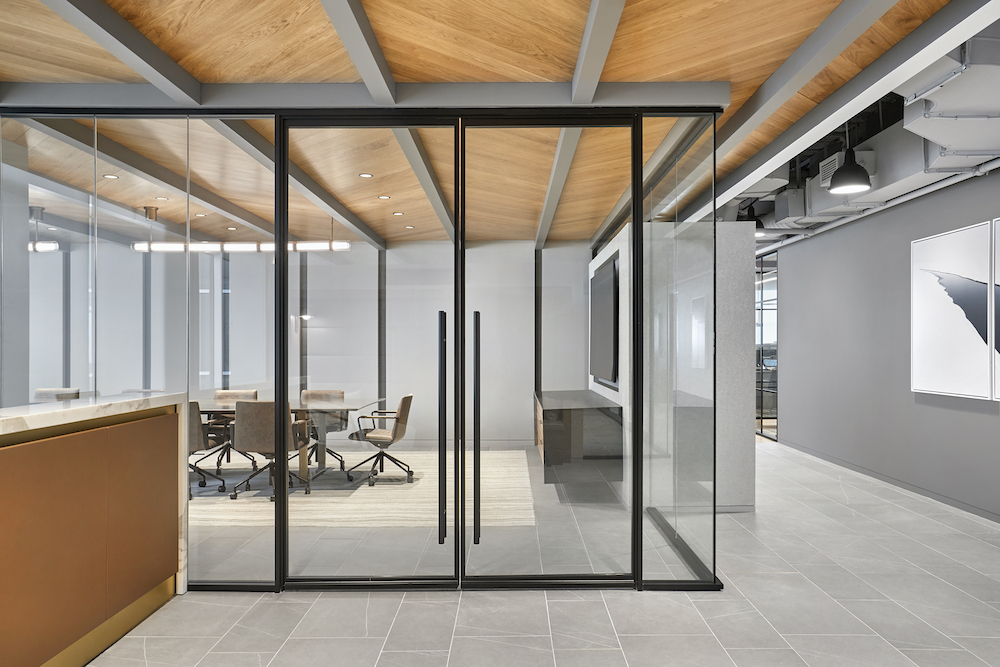Spectorgroup’s Sara Agrest explains how an honest connection to brand values benefits staff retention, recruitment, and the evolution of the workplace as a whole.
When we think of branding in the workplace, it’s easy to imagine bold graphics, splashy logos, and oversized signage, but does that really convey a company’s overall mission and values? Effective office design is understanding an organization’s ethos before determining the right branding strategy. A design that encompasses brand values invites camaraderie and fosters mentorship while creating impactful experiences that give employees a sense of belonging – but it’s not a one-size-fits-all approach. The key to thoughtful, brand-centric design is establishing a strong workplace strategy that welcomes authentic expression.

A Reflection of Company Values
As workplace strategists and designers, it’s important to recognize a company’s needs when planning and executing meaningful office design. How an organization, and its employees, operate will largely influence the design choices, ensuring methods speak to the brand, boost productivity and prioritize employee morale. By communicating a brand’s values with authenticity in mind, designers can cultivate an inspiring office environment that feels fresh yet familiar.
Utilizing an ethnographic approach, strategists can uncover an organization’s values through workshops, visioning exercises, branding brainstorms, and cultural work sessions. These qualitative methods are designed to draw out information that helps clients identify their goals and the story they want to tell through their space.


Images by Spectorgroup
As a result, designers are able to create spaces that mirror an organization’s needs, down to the finest details that may have been overlooked. An in-depth exploration provides the information necessary to understand the core of a company and how its employees work while maximizing the way they interact within the space to tell a compelling brand story. Looking further down the line, discussing business goals and the future of a company can aid in optimizing the office space, creating the flexibility needed for growth over time.
Workplace design is more than creating an aesthetically-pleasing space with coveted amenities – it means capturing a brand’s culture and mission, and synthesizing that into the design. Establishing a connection between the brand and the workplace goes beyond what we know of a typical branded environment, and instead creates micro-experiences that contribute to the actions, goals, and values of an organization as a whole.

Brand Authenticity and Thoughtful Design
Branding is all about recognition, which, to most people, means logos and advertising. In the office, however, branding is intended to support the company’s values. Instead of heavy branding moments, authenticity is channeled through touchpoints that integrate layers of information, from creating different experiences and zones that mirror the work being done, to developing spaces for employee wellbeing. It’s about designing around the activity and its needs rather than creating a specific branding moment. As employees return to the office, amenities like wellness rooms and yoga rooms have risen in popularity, but while enticing, if the staff does not find use in the space, there is no connection. It’s important that these spaces align with what is important to the company and its employees, and that they actively encourage staff to utilize them, in order to be authentically reflective of the brand.

A balance between subtle and heavy branding can even out the possibility of an office being too corporate or too kitschy. Elements such as materials, colors, graphics, as well as combinations of spacious meeting areas and quiet rooms, can boost staff engagement if contrasted well enough to capture the identity of an organization. Major branding moments done in a more creative, experiential way come across as integrated and bring components together to tell the brand story. Trends come and go, and what works for one workplace may not work for the other. To withstand the test of time, workplace designs need to be timeless and flexible in order to evolve as the company grows.

A Physical Manifestation of Company Culture
A connection to a physical space is more important than we think – it can uplift mood, reinvigorate, and relax when designed through a human-centric lens. When discussing the workplace, employees are at the root of a company’s culture, and it’s important that they are planted in a good environment.
The office can be a place of learning, growing, and socialization, and the best workplace environments are the ones where employees step in and instantly feel immersed and connected to the brand. Whether it be through high-impact moments where collaboration flourishes or moments of structured calm that optimize workflow, organizations need to understand how important these factors are to their employees.
Workplace design that effectively translates employee needs and what a brand stands for empowers employees and stimulates a healthy culture. An honest connection to brand values can do wonders for staff retention, recruitment, and evolve the workplace as a whole.


